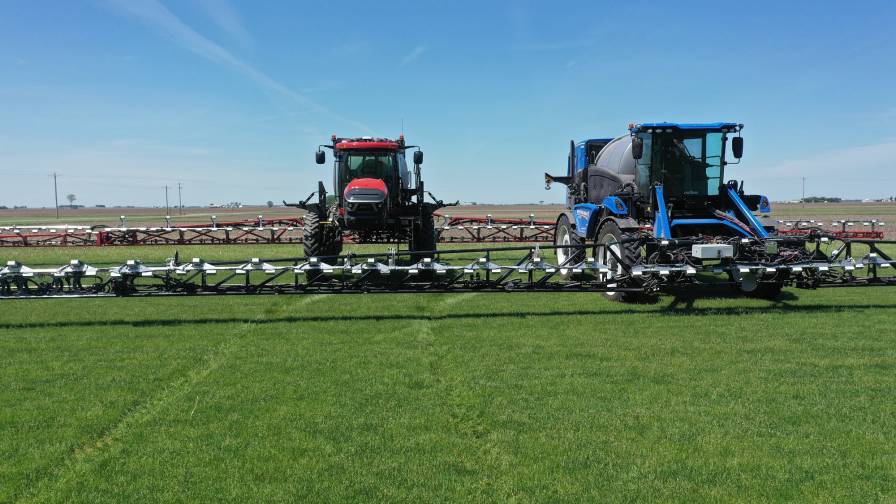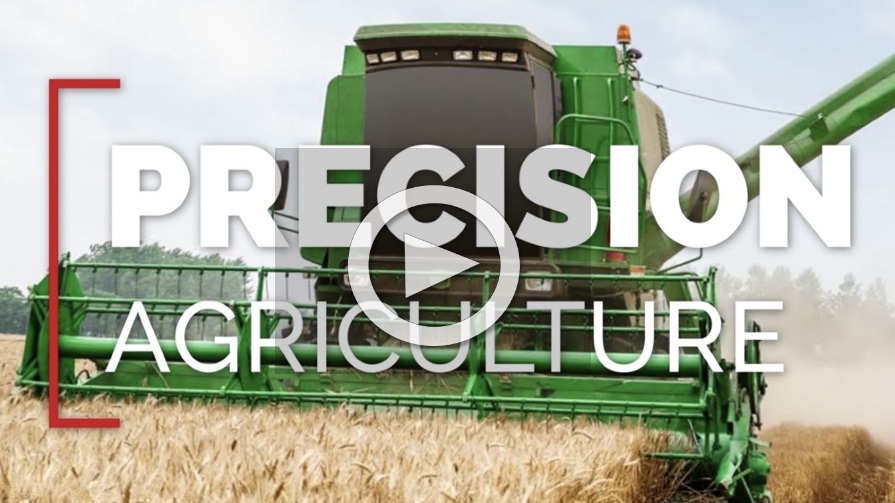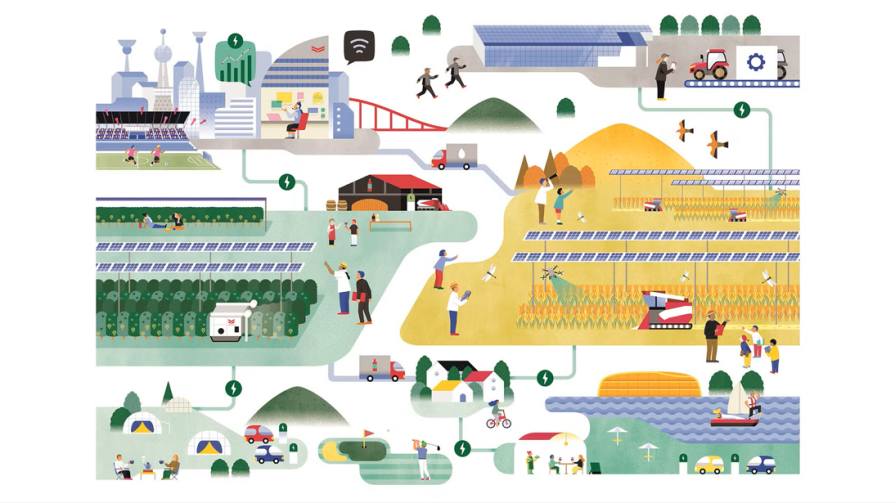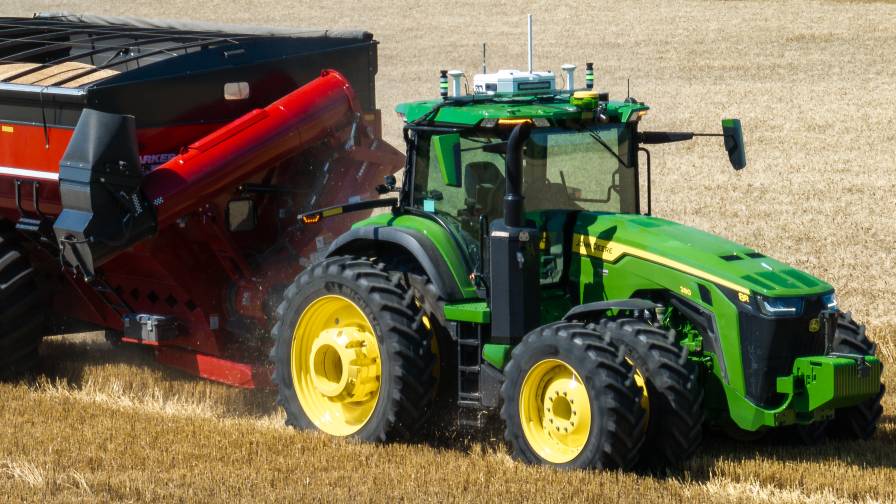AgTech Advancements Powering Farming Innovations

Sensors are among the most heavily used hardware solutions on the farm – they are essential to gathering data to inform decision-making. Photo credit: DigiKey
Editor’s note: Josh Mickolio is an IoT expert at DigiKey, a global leader in electronic components distribution. In this article, he shares insights on precision agriculture technologies that are allowing farmers to more accurately and efficiently complete farm tasks, such as weed and pest control, tracking livestock, maintaining equipment and protecting soil health.
While farming may be one of the world’s oldest professions, the agriculture industry is changing rapidly. Farms across the globe no longer fit the stereotypical rustic aesthetic with one family farmer who handles most of the day’s chores manually and lives off the grid without phone, cable or internet access.
Today, modern farmers are increasingly turning to agriculture technology (AgTech) solutions to help keep up with the pace of global food demand. A wide variety of factors have made the farming job more complex and challenging, from climate change to labor shortages, rising costs, decreased interest in farming as a career, and more.
Advancements in AgTech are responsible for smarter harvesting, the electrification of equipment and better data collection in order to make more informed decisions. Plus, advances in global connectivity have improved data communication speeds, even in extremely rural or high-altitude locations where farms are often located.
One of the AgTech solutions that is picking up a great deal of steam is precision agriculture, which relies heavily on technology to more accurately and efficiently complete farm tasks, whether it’s weed and pest control, tracking livestock, maintaining equipment or protecting soil health.
Farming requires a great deal of energy and resources, and precision agriculture aims to use that energy and those resources more effectively and efficiently for the betterment of all. Modern farms rely on technology to elevate the art of farming with automated and sustainable solutions.
Technology Enables Evolution
The increasing amount of technology on farms dates back to the 1980s and 1990s. During this period, there was increasing public scrutiny of the use of pesticides and chemicals in agriculture operations, and advances in GPS technology led to its installation in tractors and combines.
Over the following decades, connectivity solutions have continued to improve, enabling faster data transfer for both cloud and edge computing globally. Additionally, the capabilities of autonomous solutions have accelerated in recent years, such as improvements in optics processing, the growth of artificial intelligence and the introduction of solid-state LiDAR – all of which add up to advancements for precision agriculture.
In order to realize its full potential, precision agriculture requires a robust foundation, which often means a deep well of data points. That data is collected and measured by a wide variety of hardware and software solutions.
Today, sensors are one of the most heavily used hardware solutions on the farm – they are essential to gathering data to inform decision-making. These sensors are incredibly rugged, able to withstand many environmental factors such as high and low temperatures, extreme weather, chemical exposure, dirt, vibration, animals and much more.
As a result, the sensors used in most farm equipment are not only designed for wear and tear but also in terms of equipment design, they are typically well-protected and hidden in hard-to-disturb places.
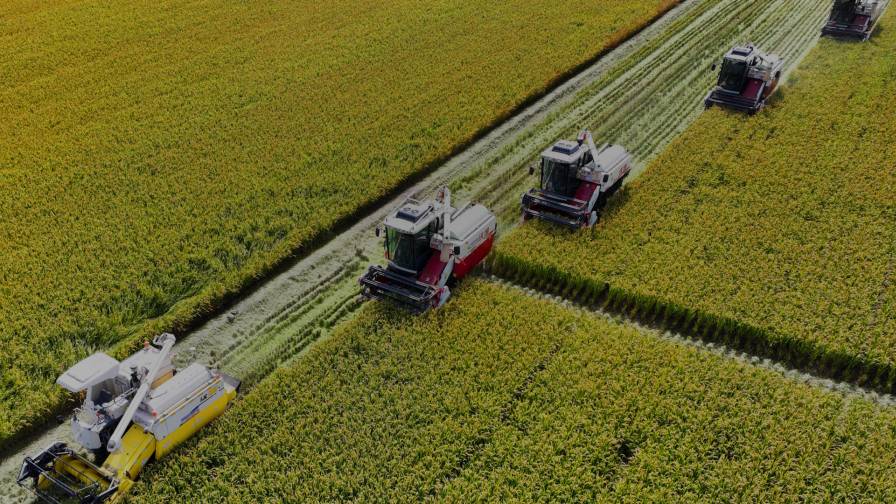
Improved sensor technology ultimately leads to better, more precise results for farmers, including better equipment positioning and monitoring. Photo credit: DigiKey
Sensors used in AgTech tend to buck the “miniaturization” trend seen in so many other component categories – because they’re being installed on large farming equipment, there is usually more room to house them alongside other electronics or install extra protection inside the unit.
Improved sensor technology ultimately leads to better, more precise results for farmers, such as better equipment positioning and monitoring, better moisture and sunlight detection, increased comfort for drivers and passengers, and much more.
Reaping the Benefits
With billions of lives relying on farmers and the food they produce, the stakes are high, and today’s agriculture industry leaves no room for error.
Global food demand is on the rise as the world’s population increases and available arable land shrinks due to climate change. This means farmers must increase yields while also deploying scalable and sustainable farming techniques.
Some of the most commonly used applications of precision AgTech on the farm include:
- Soil Health: mapping and monitoring fields for optimized application of nutrients, pesticides or irrigation
- Livestock Management: tracking animal behavior and health; automated feeding or milking systems for enhanced productivity
- Crop Monitoring: computer vision-assisted harvesting and weeding, ensuring that crops are in the ideal condition for harvesting or targeting only harmful weeds with pesticide sprayers; as well as the use of drones and satellites for collecting aerial data
- Maintaining Equipment: monitoring vehicle and equipment health; flagging issues and parts needing replacement to prevent expensive breakdowns
As technology continues to scale and evolve toward precision and adaptability, farmers will reap the rewards, which range from increased land or livestock productivity to less reliance on manual labor and staffing, as well as positive environmental impacts from using fewer inputs.
The Future of AgTech
The modern agriculture industry is tasked with creating more food while reducing environmental impacts and navigating labor shortages. Advanced technology solutions can help farmers automate the critical processes that are crucial to reaching the scalability needed to satisfy rising demand.
Of course, implementing new technology can come with its own set of challenges. There has traditionally been a disconnect between technology and farming. To enable mass adoption of precision agriculture, technology providers must be prepared to scale solutions easily and cost-effectively across the globe, and connectivity solutions must continue to improve in order to enable real-time processing and analysis.
In an industry that is already often operating with razor-thin margins, the good news is farmers can not only purchase new equipment with precision agriculture capabilities, but also retrofit existing equipment for a more cost-effective solution. AgTech can also help eliminate or reduce costs in many areas, such as purchasing fewer chemicals and avoiding waste, hiring less human labor and reducing equipment downtime.
As more agriculture operations embrace technology and automation, companies like DigiKey are making solutions more accessible to engineers who are building the next generation of AgTech.
From generation to generation, technology will continue to evolve rapidly and adapt to current and future needs, improving the adoption rate of precision agriculture. By focusing on farming insights and automation at the plant level, the world can not only farm better, but farm different.






